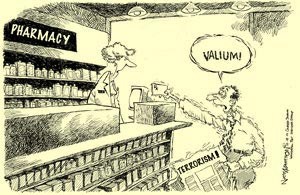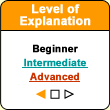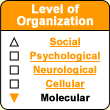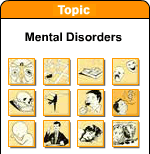|
|


Both of the two main chemical messengers in the cerebral cortex are amino acids: gamma-aminobutyric acid (GABA), which has an inhibitory effect on the brain, and glutamate, which has an excitatory effect.
In very simplified terms, the normal brain can be regarded as existing in a state of equilibrium between these two neurotransmitters. Too much GABA, and the individual loses consciousness; too much glutamate, and they go into an epileptic seizure. |
In addition to anxiolytics and sedatives, two other types
of medications can be used as transquilizers: antidepressants,
which improve the morale of people who have symptoms of depression,
and neuroleptics, which are used to treat
psychoses - major behavioural disorders whose disabling nature
is not recognized by the patients themselves. |
|
|
 |
|
When people suffer from anxiety disorders,
certain parts of their brain, such as the amygdala,
are often hyperactive. Tranquilizers are medications that
reduce this excess brain activity, thus reducing these individuals'
anxiety to an acceptable level. |
The temporary state of calm thus provided by tranquilizers accomplishes
two things. First of all, it lets these people get on with their
daily lives. Second, it enables them to undertake some form of
psychotherapy, which is a necessary part of treating any anxiety
disorder if a long-term cure is to be achieved (follow the Tool
module link to the left).
Two major families of medications are used chiefly as tranquilizers:
Anxiolytics produce feelings of relaxation
and reduce symptoms of anxiety;
Sedatives (also known as hypnotics) are designed
to induce and/or maintain sleep. They can therefore reduce
alertness when the person taking them is awake.
The most commonly prescribed anxiolytics and sedatives belong
to the benzodiazepine family.
By augmenting the effects of the inhibitory neurotransmitter GABA,
benzodiazepines reduce overall brain activity.
Like any other substance that is introduced into the brain, tranquilizers
produce not only their desired (in this case, calming) effects,
but also various undesirable side effects. These often unavoidable
side effects occur because the same substance can interact with
different molecules in different parts of the brain.
Benzodiazepines, for instance, act on a molecule found in many
different parts of the brain: the GABA
receptor. This explains these drugs' many well known side effects:
reduced alertness, sleepiness, varying degrees of anterograde
amnesia, duller reflexes, and, most notably, dependency if
someone takes them for too long.
Many different molecules are now used as anxiolytic or sedative
medications. The
proportions of their anxiolytic and sedative effects vary from
one molecule to another.
Combining alcohol with
benzodiazepines can make someone so sleepy that they pass
out. Both of these substances act on GABA
receptors, so their sedative effects are cumulative. |
|
|





